|
Wetland and Aquatic Plants
of
Oklahoma
Interactive Keys: Emergent
Grasslike
Grasses (Poacaceae)
2.
Plants herbaceous
b. Inflorescence
with multiple florets per branch
i. Alopecurus spp.
ii. Calamovilfa
spp.
iii. Eragrostis
spp. and Neeragrostis spp.
iv. Glyceria spp.
a. Flowers (spikelets) narrow
b. Flowers (spikelets) lance-shaped
v. Leersia spp.
a. Lower panicles
in whorls
b. Lower
panicles
alternate
vi. Phalaris spp.
vii. Phragmites spp.
viii. Polypogon sp.
ix. Saccharum
spp.
x. Spartina
spp.
Foxtail (Alopecurus sp.)
Carolina foxtail (Alopecurus
carolinianus Walt.)
Native annual.
Click thumbnail to enlarge
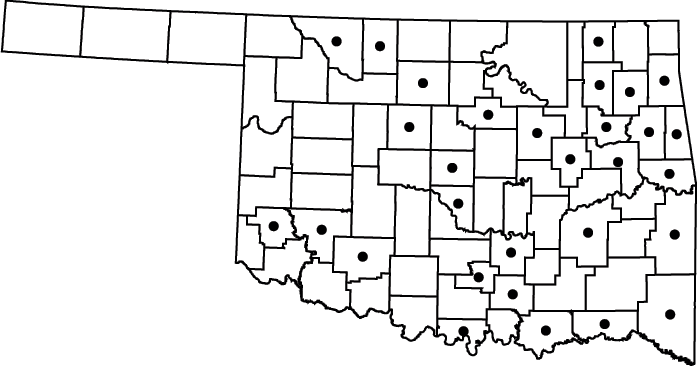
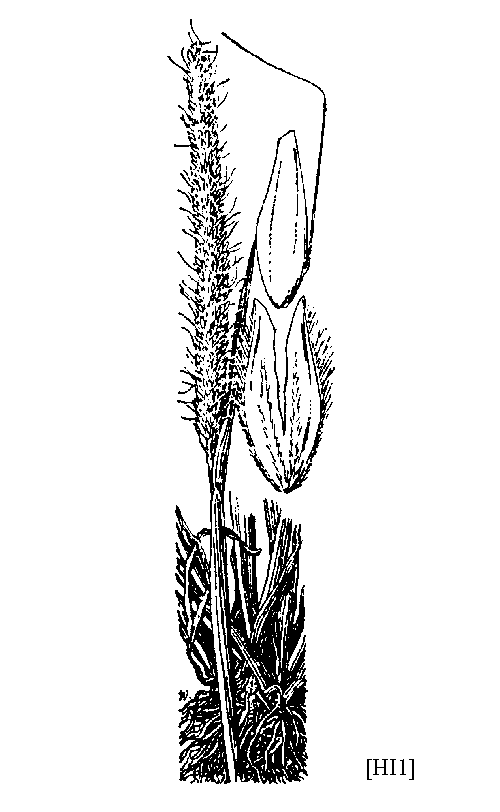
Note: A diminutive plant that is common, though
not
abundant, in most wetlands.
NWI
status: FACW
Sandreed (Calamovilfa
spp.)
Cumberland
sandreed (Calamovilfa
arcuata K.E. Rogers)
Native
perennial.
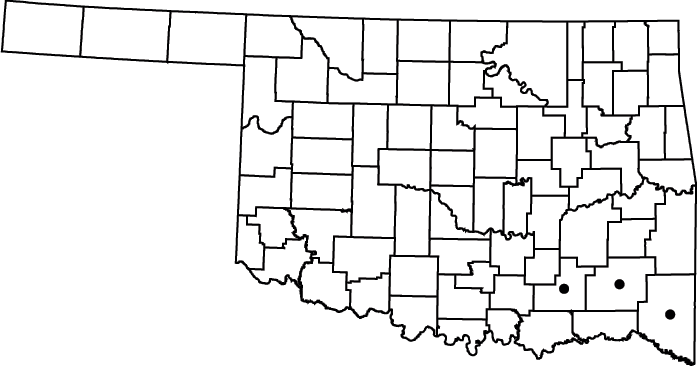
Note: A rare species.
NWI
status: FACW
Lovegrass (Eragrostis
spp. and Neeragrostis spp.)
Note: These two grasses are very similar in
appearance;
both are low growing, mat forming species that establish in lake
drawdown
areas.
Teal
lovegrass (Eragrostis
hypnoides (Lam.) B.S.P.)
Native
annual.
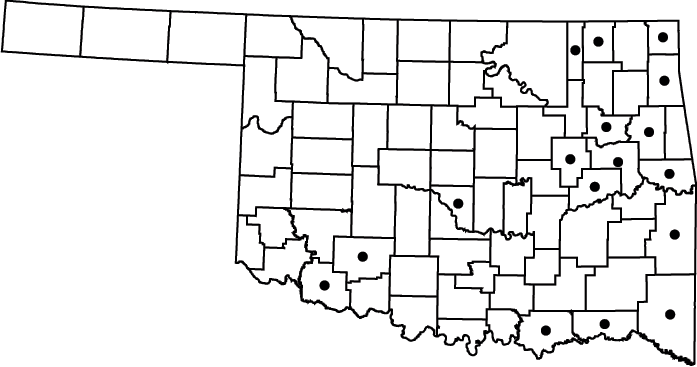
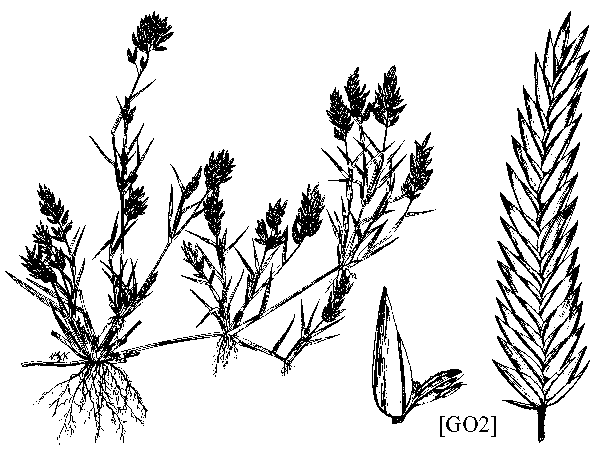
Note: Leaves are rolled at the margin (involute).
NWI
status: OBL
Creeping
lovegrass (Neeragrostis
reptans (Michx.) Nicora)
Native
annual.
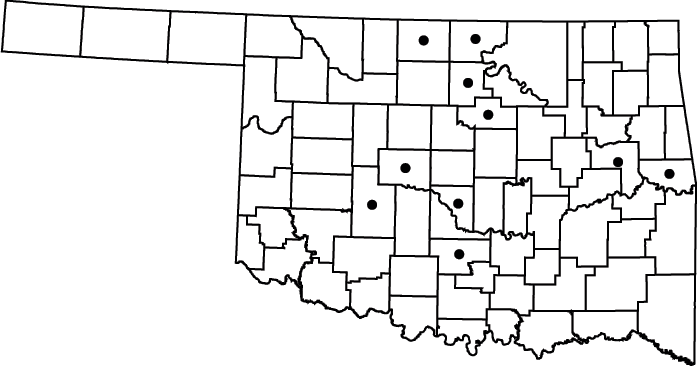
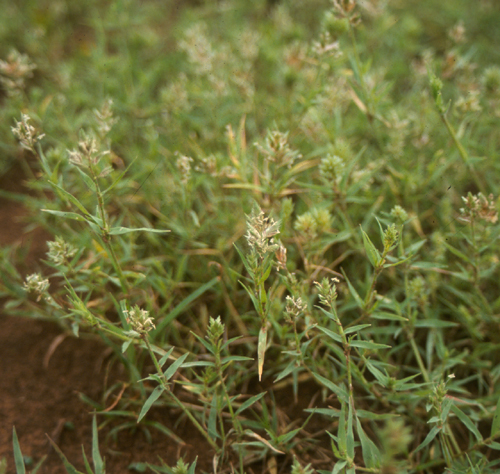
Note: Leaves are flat and narrow.
NWI
status: OBL
Managrass (Glyceria
spp.)
Note: the seeds of all three species are eaten by
waterfowl
and other wildlife.
Flowers (spikelets) narrow
Arkansas mannagrass (Glyceria
arkansana Fern.)
Native perennial.
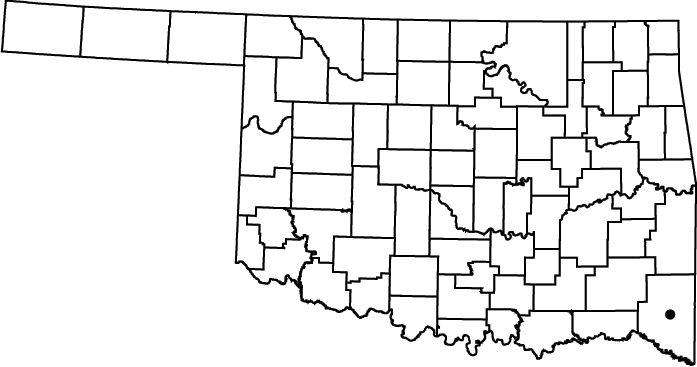
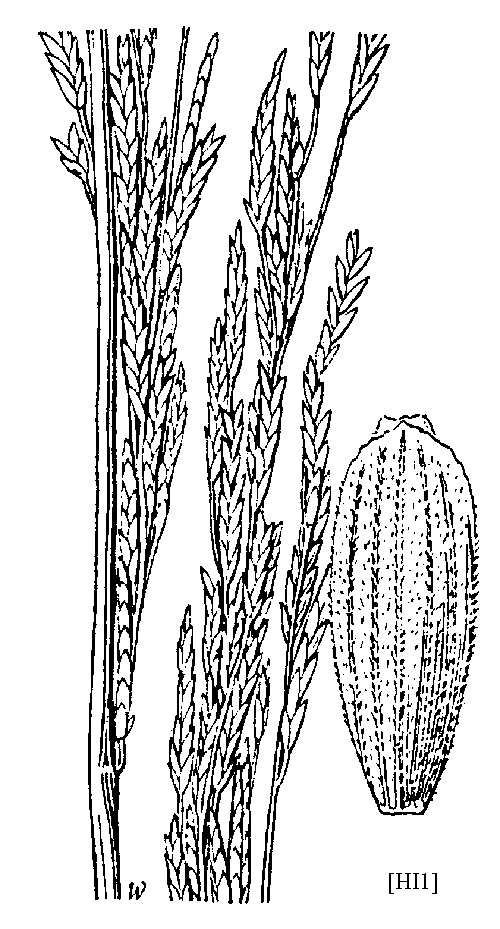
Note: Can be easily confused with floating
mannagrass.
NWI
status: OBL
Floating mannagrass (Glyceria
septentrionalis A.S. Hitchc.)
Native perennial.
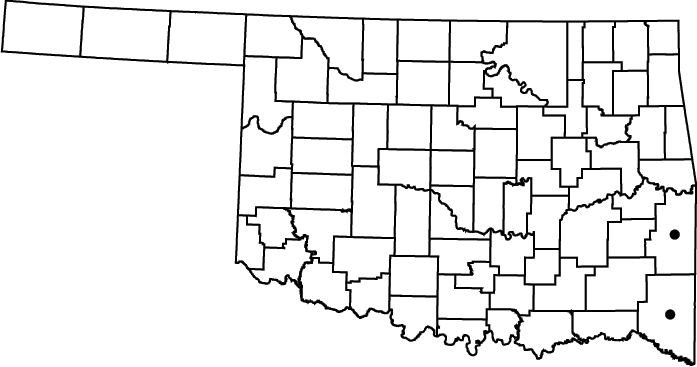
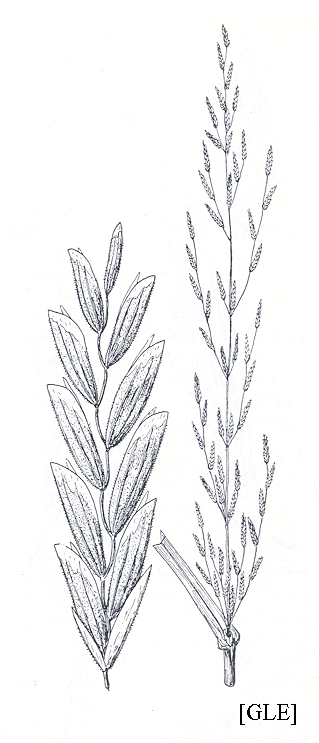
NWI
status: OBL
Flowers (spikelets) lance
shaped
Fowl
mannagrass (Glyceria
striata (Lam.) A.S. Hitchc.)
Native
perennial.
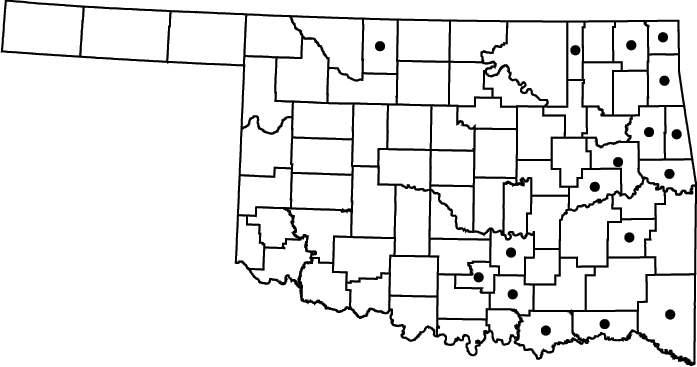
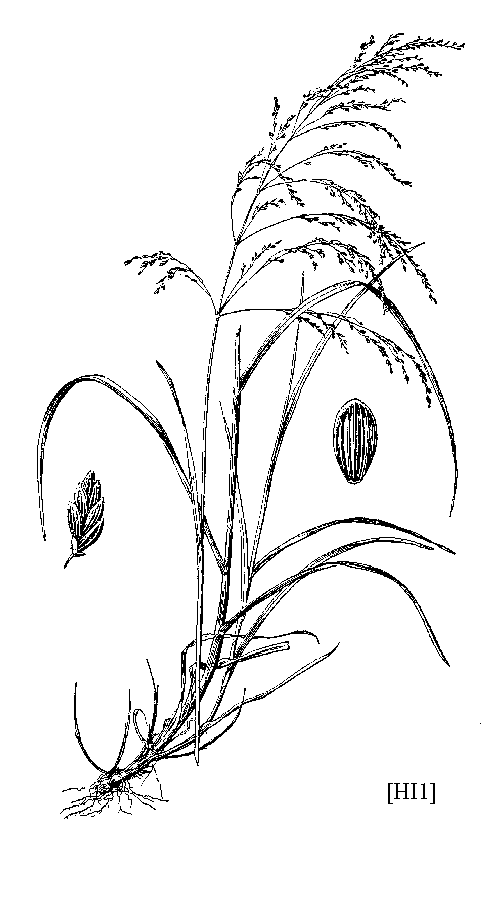
Note:
This is the most
broadly distributed species of managrass.
NWI
status: OBL
Cutgrass (Leersia
spp.)
Lower panicles in whorls
Rice
cutgrass (Leersia oryzoides (L.) Sw.)
Native
perennial.
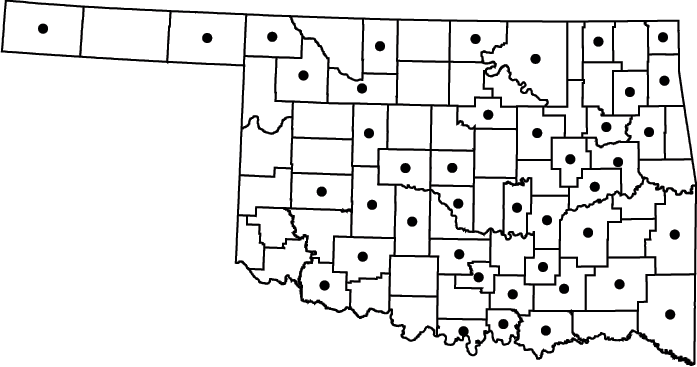
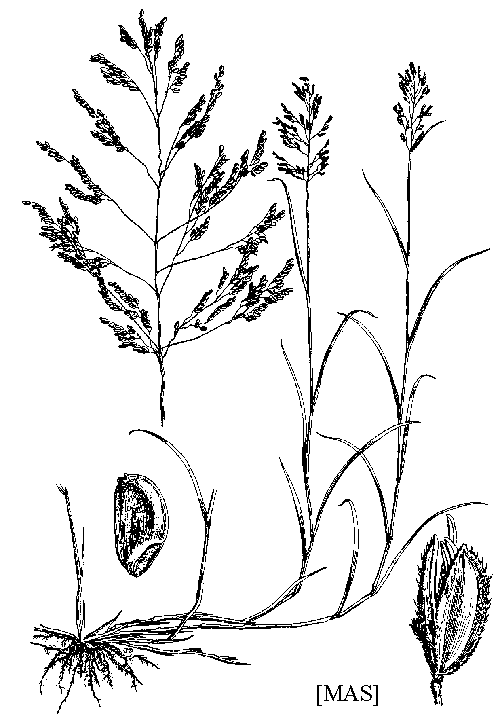
Note: The most widely distributed species of
cutgrass in
Oklahoma. It is also a larval host
plant for several species of skippers and other insects.
NWI
status: OBL
Lower panicles
alternate
Catchfly grass (Leersia
lenticularis Michx.)
Native
perennial.
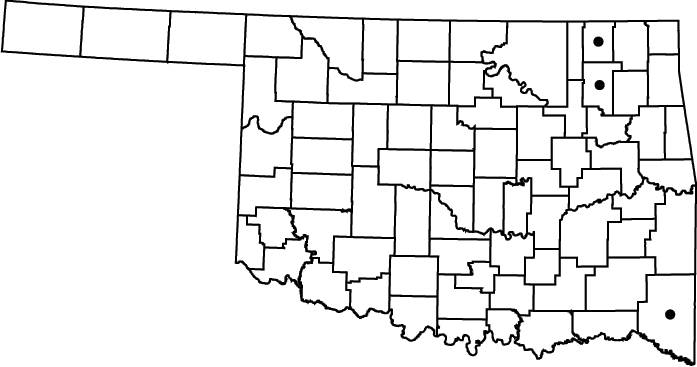
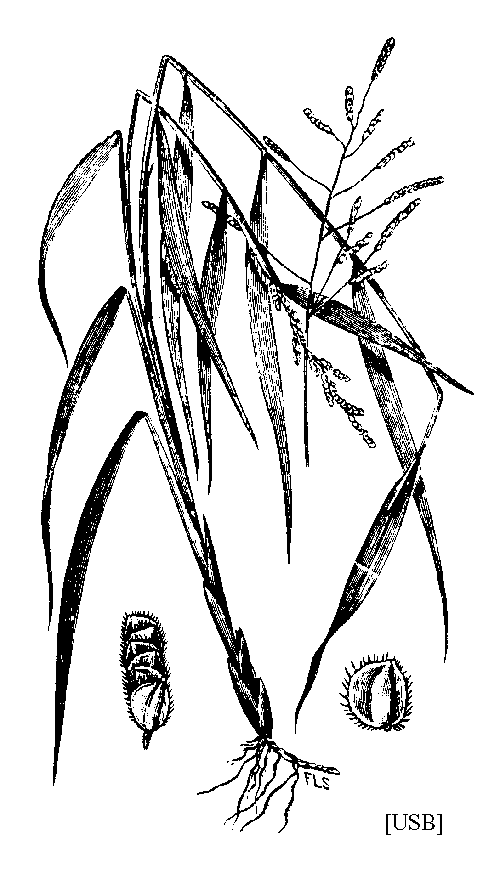
Note: spikelets are oval.
NWI
status: OBL
Virginia cutgrass (Leersia
virginica Willd.)
Native perennial.
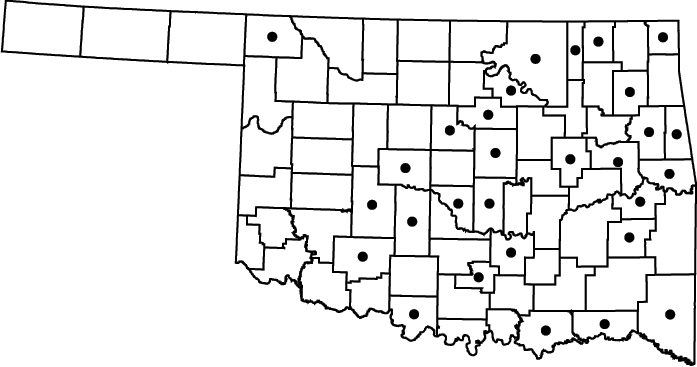
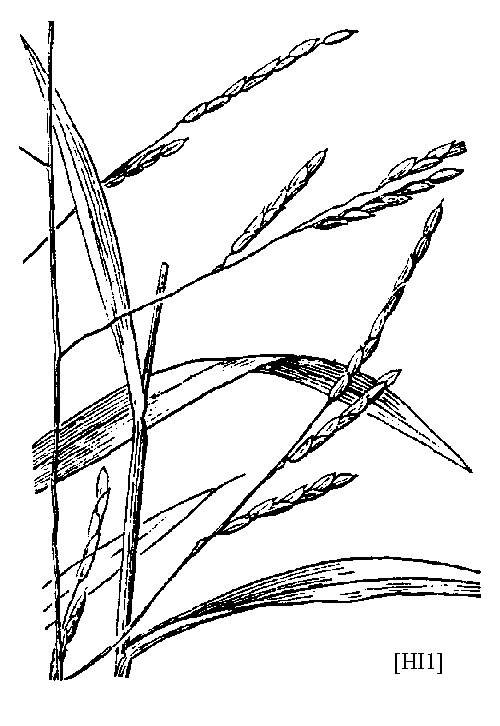
Note: spikelets are oblong.
NWI
status: OBL
Canarygrass (Phalaris
spp.)
Carolina canarygrass (Phalaris
caroliniana Walt.)
Native annual.
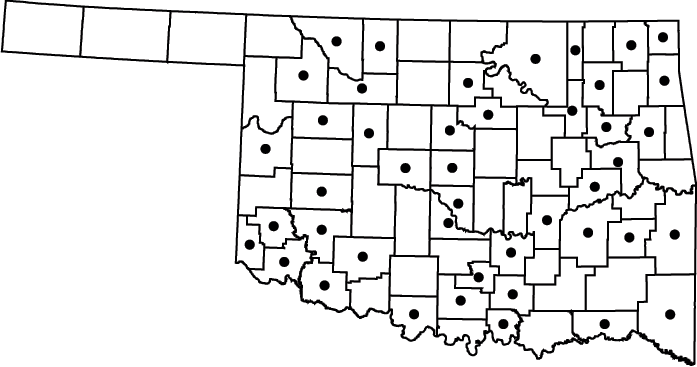
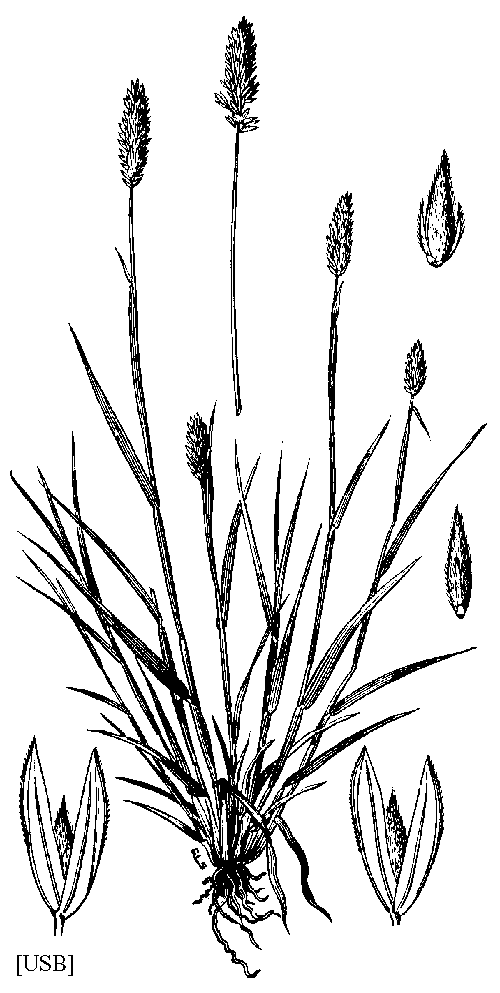
Note: Plants grow in tufts.
NWI
status: FACW
Reed canarygrass (Phalaris
arundinacea L.)
Native perennial.
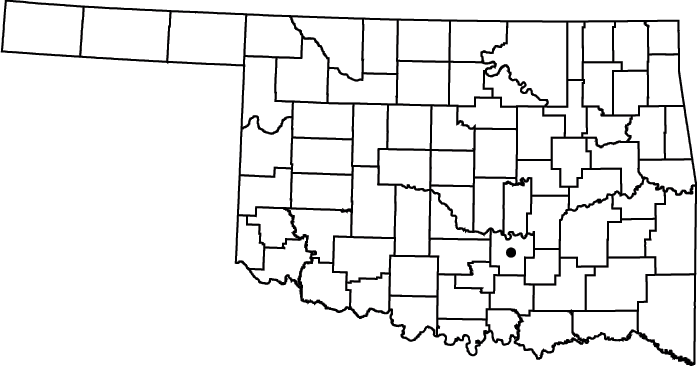
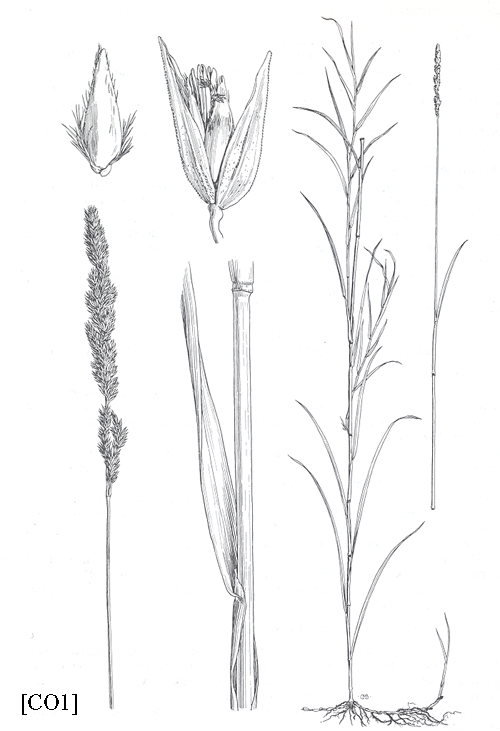
Note: Plants produce a rhizome.
NWI
status: OBL
Reed
(Phragmites
sp.)
Common reed (Phragmites
australis (Cav.) Trin. ex Steud.)
Native perennial.
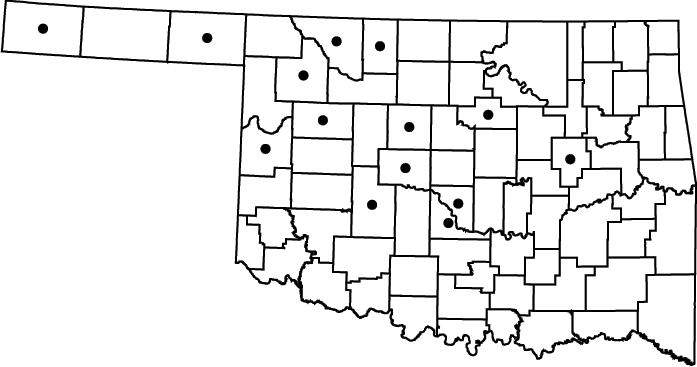
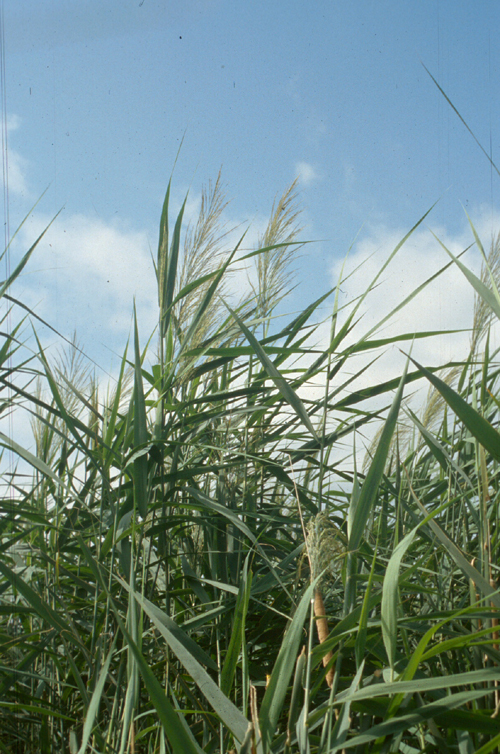
Note: This a tall, robust plant that is most
common in
western Oklahoma. Common reed is a
fiber plant by many tribes.
NWI
status: FACW
Rabbitsfoot (Polypogon
sp.)
Rabbitsfoot grass (Polypogon
monspeliensis (L.) Desf.)
Introduced annual.
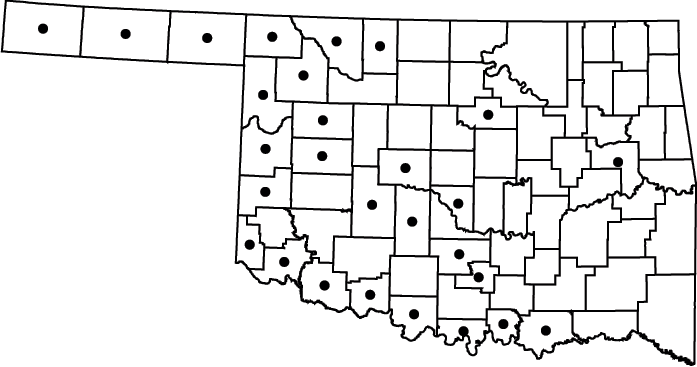
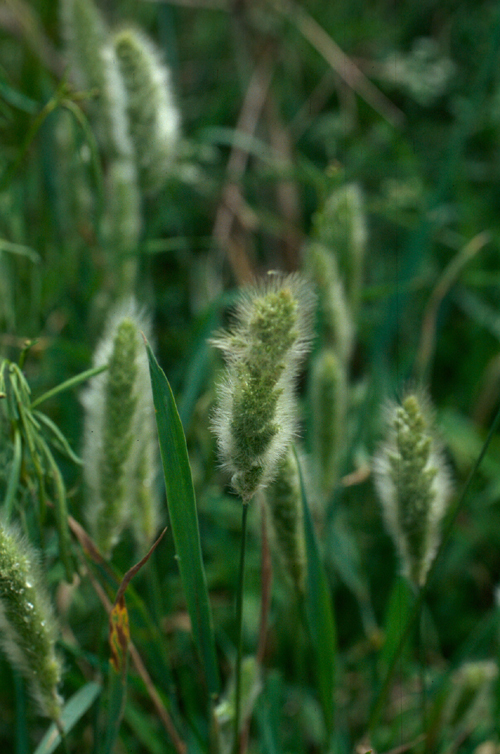
Note: Rabbitsfoot is a native
of Europe. It is most commonly seen in
western Oklahoma wetlands.
NWI
status: FACW
Plumegrass (Saccharum
spp.)
Narrow plumegrass (Saccharum
baldwinii Spreng.)
Native perennial.
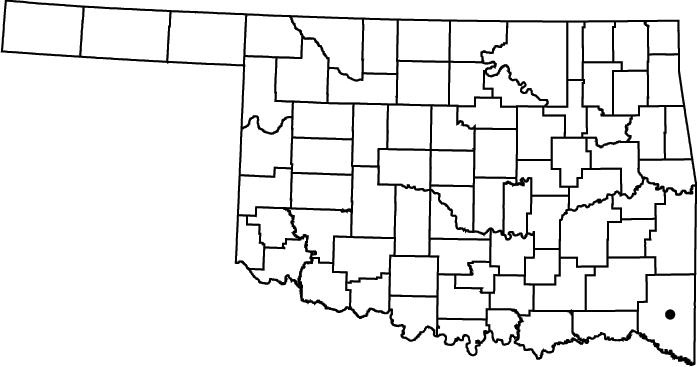
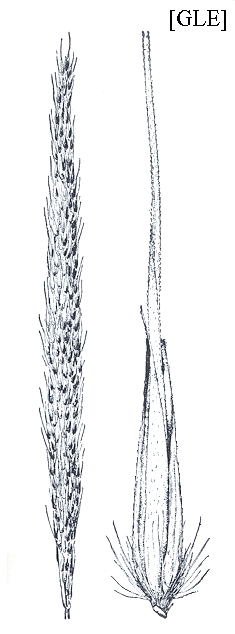
Note: Flowering stalk with closely appressed
panicles.
NWI
status: OBL
Sugarcane plumegrass (Saccharum
giganteum (Walt.) Pers.)
Native
perennial.
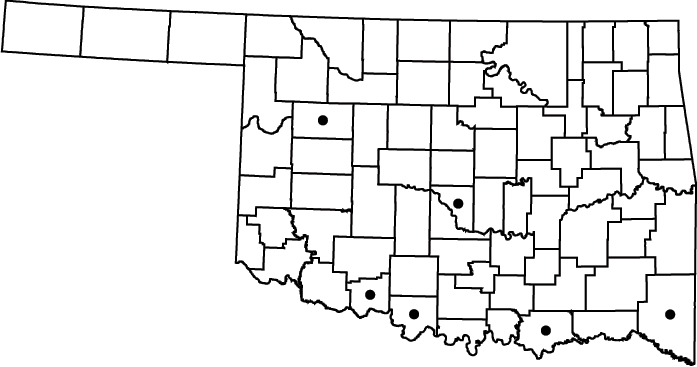
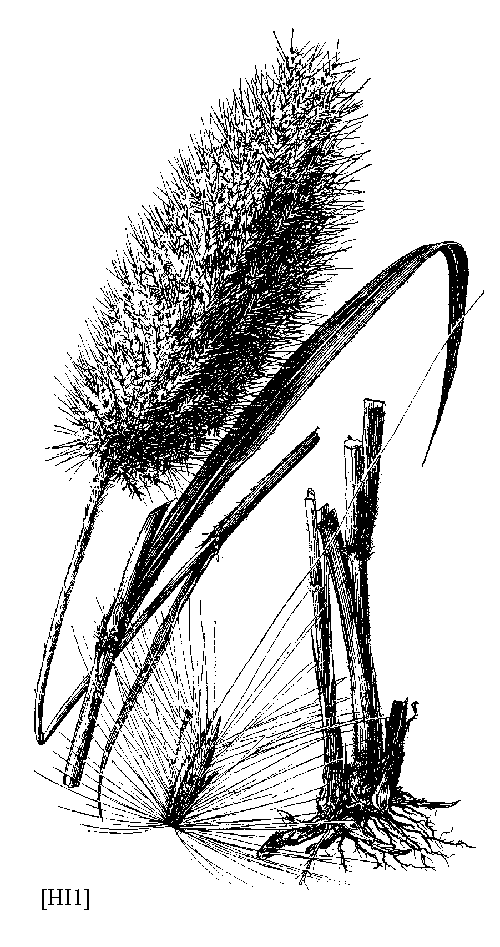
Note: Flowers open and plume-like.
NWI
status: FACW
Cordgrass (Spartina
spp.)
Prairie
cordgrass (Spartina
pectinata Bosc ex Link)
Native
perennial.
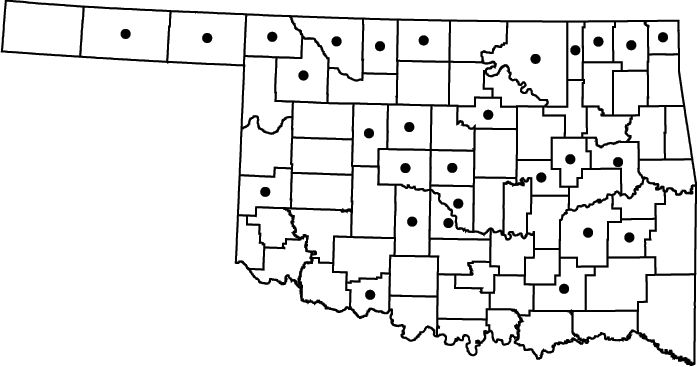
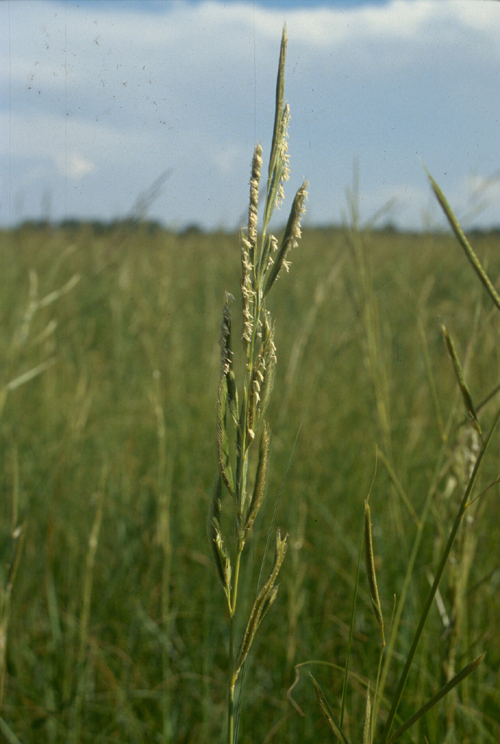
Note: The young shoots are prefered by cattle. Often absent in wet, grazed pastures, but
growing vigorous in ditches on the otherside of the fence.
Geese, muskrats, and beaver eat the rhizome
and some birds will eat the seed (caryopses). The
stems were used as a construction material by
some tribes, including
the Poncas.
NWI
status: OBL
Giant
cutgrass (Zizaniopsis
miliacea (Michx.) Doell & Aschers)
Native perennial.
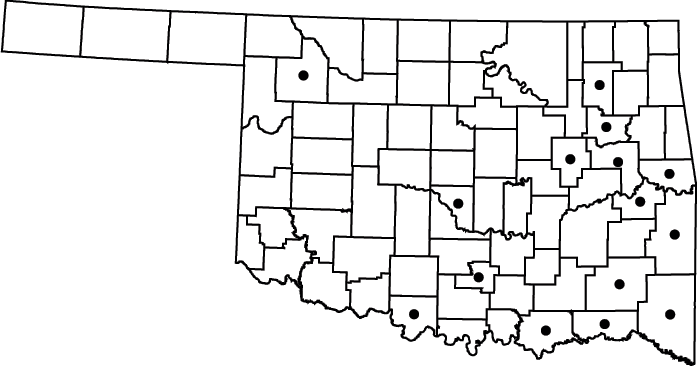
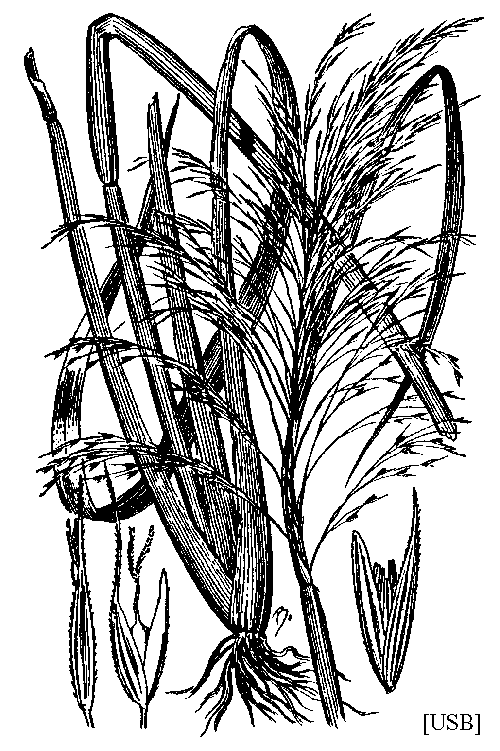
NWI
status: OBL
Last update: 2/27/04
Comments to : Bruce Hoagland
bhoagland@ou.edu
Go to Oklahoma
Biological Survey Home Page
 Disclaimer Disclaimer
|

